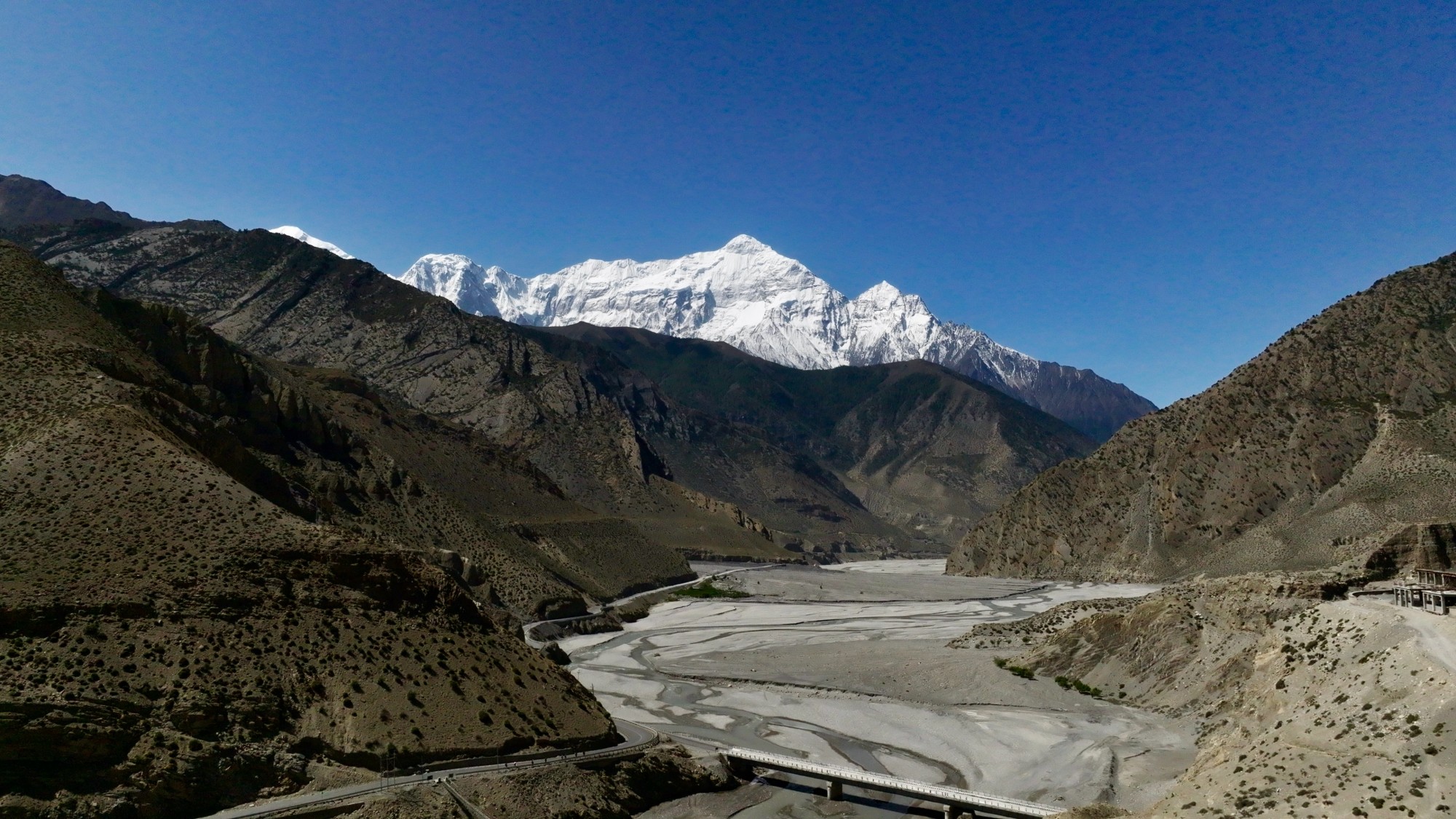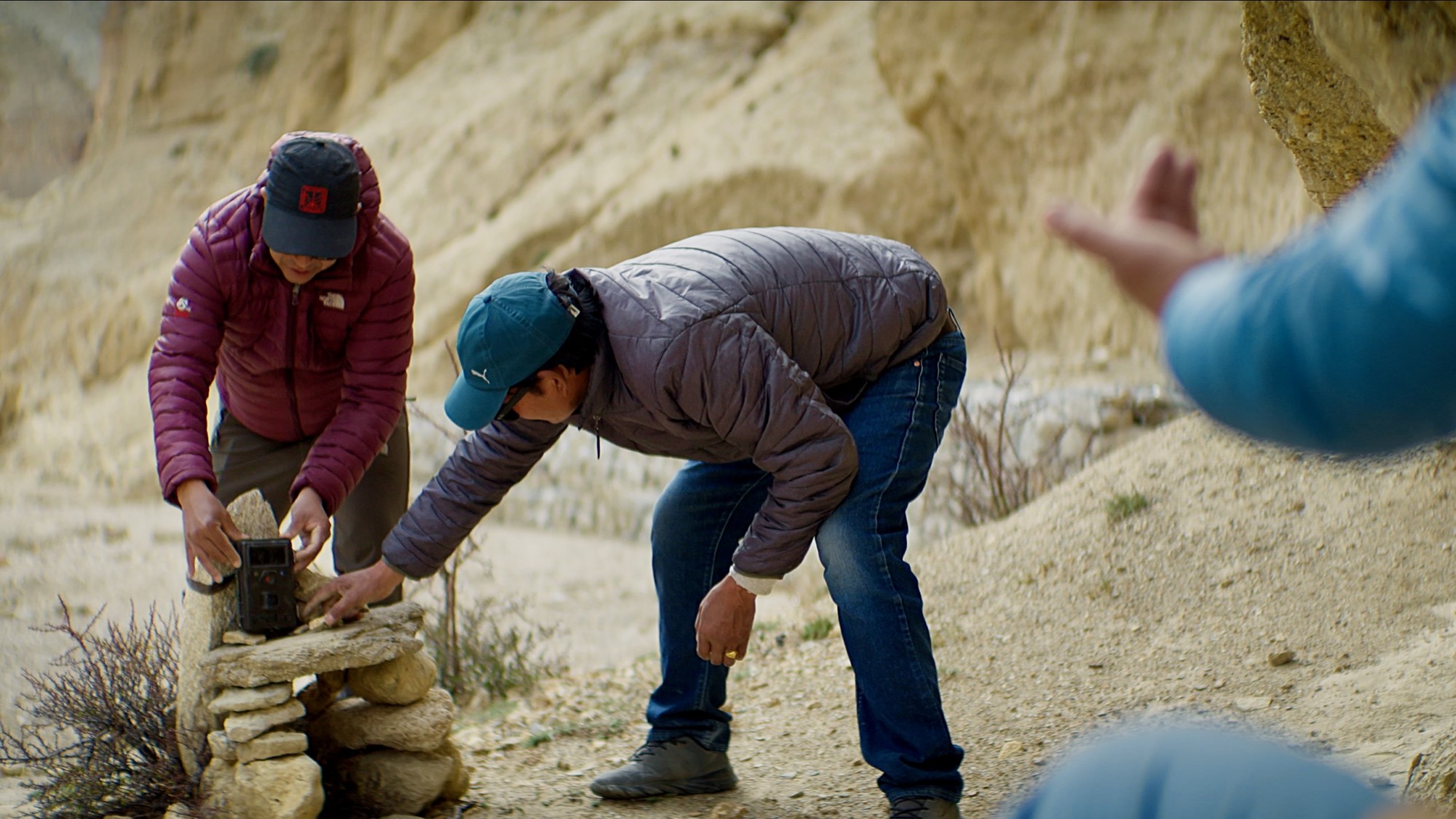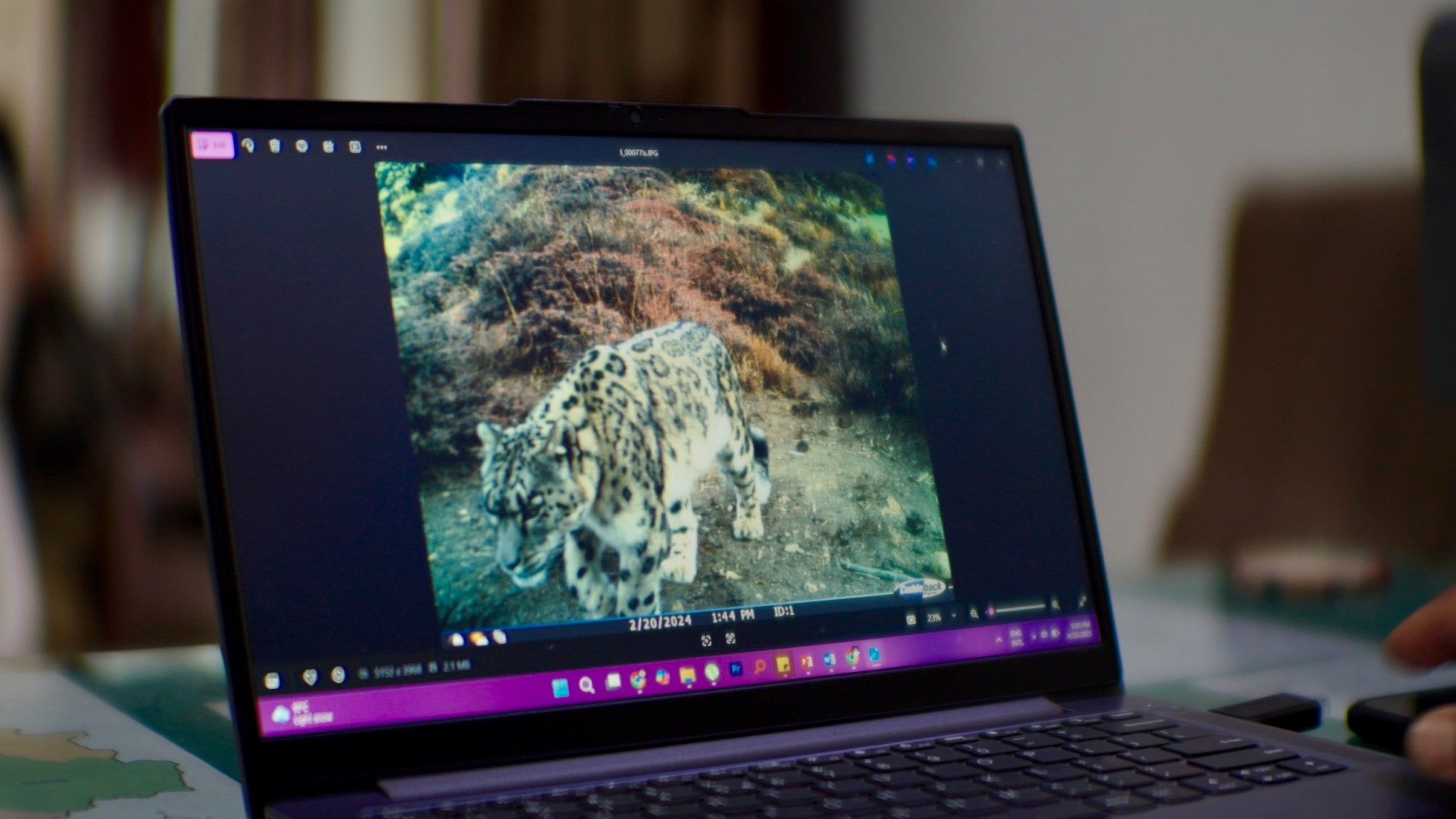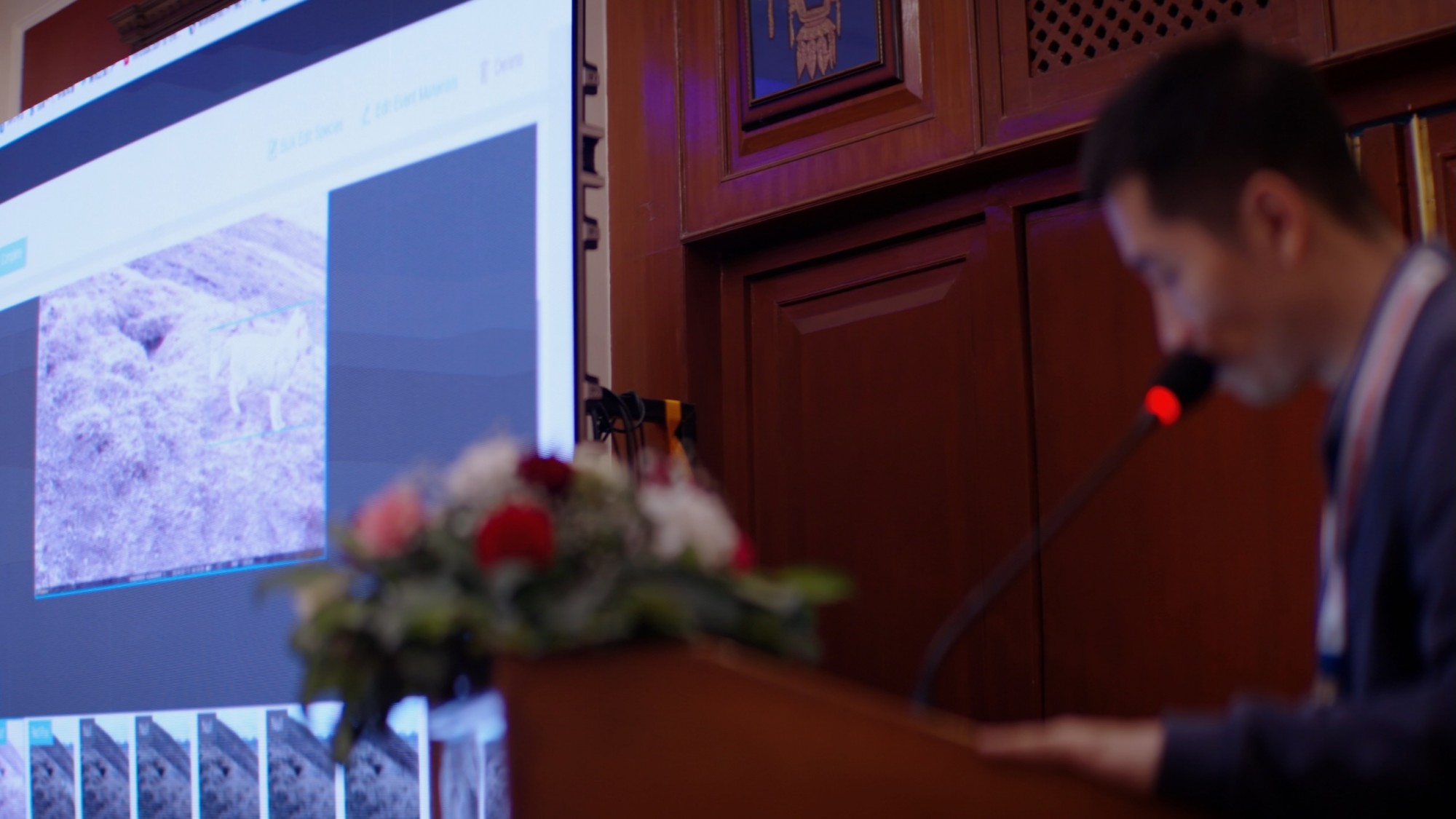How AI Is Helping Protect the World's Most Elusive Big Cat
In the thin air of Nepal's Upper Mustang, a camera trap clicks. Somewhere in 770,000 square miles of mountains that spread across a number of Asian countries—an area larger than Mexico—one of the world's 4,000 remaining snow leopards has just walked past.
Finding that single image among thousands of photos captured by the camera trap used to take park rangers hours of manual review. Now it happens automatically, with the help of AI.
“The reason we focus on snow leopards is twofold. Snow leopard numbers, a strong indicator of climate change, are incredibly low. Secondly, their habitat spans multiple countries across some of the most remote and difficult terrain on earth.”
— Yao Ma, Conservation Officer, Tencent Sustainable Social Value Organization
 Nepal’s vast and remote Upper Mustang region is a critical snow leopard habitat.
Nepal’s vast and remote Upper Mustang region is a critical snow leopard habitat.
Chasing the Big Cats Across Borders
Snow leopards slip across international boundaries as easily as rocky ridges, leaving barely a pugmark in snow that could melt by morning. Tracking these apex predators is essential to inform the protections of both the species and their habitats. It also means deploying camera traps across the world’s most rugged terrain, then drowning in the data they produce.
Nepal alone operates nearly 800 camera traps. Each generates thousands of images every few months. Every hour spent reviewing photos is an hour not spent in the field preventing poaching, managing wildfires, or working with communities.
 Local field rangers set up camera traps.
Local field rangers set up camera traps.
The AI Solution
To tackle the vast camera trap data, Tencent developed “Eye of the Species”, an AI model to enhance conservation efforts.
The system identifies snow leopards from thousands of images with up to 98 percent accuracy—and it works offline in the world's most remote locations. The model doesn't just find snow leopards. It recognizes 286 species and counting, and is expected to reach 1,500 by the end of 2025.
Unlike traditional single-species recognition models, this model doesn't require extensive data to learn new species, reducing setup costs by 70 percent. It makes it a scalable tool for broader wildlife conservation efforts across different regions and species.
 A close-up image of a snow leopard captured by a camera trap.
A close-up image of a snow leopard captured by a camera trap.
What this means for conservationists:
- Time saved: The AI filters empty photos and tags species, cutting manual review time by days. This frees up rangers to focus on urgent tasks like wildfire control and anti-poaching patrols.
- Better data: More accurate, timely data on snow leopard populations drives smarter policies, improves habitat management, and directs resources where they matter most.
- Stronger outcomes: Faster processing and consistent data allows the team to detect risks earlier, prioritize conservation actions, and measure progress more effectively.
“AI could help us analyze data faster and more rigorously, picking out not just snow leopards but also prey species from massive image datasets.”
— Dr. C.P. Pokharel, Conservation Director, National Trust for Nature Conservation, Kathmandu, Nepal
Beyond the Technology
Originally developed for snow leopard studies in China, the model has been adapted for use in Nepal. The Tencent team recently hosted a workshop with Nepal’s National Trust for Nature Conservation (NTNC) and China’s Shan Shui Conservation Center to introduce this system to conservationists from Nepal, Mongolia, Pakistan, and other regions.
The cross-border cooperation mirrors the snow leopards themselves: conservation that ignores human boundaries to protect animals that never recognized them in the first place.
“Snow leopards don’t recognize borders. To protect them, our efforts must cross borders.”
— Dr. Lu Zhi, Founder, Shan Shui Conservation Center
 A Tencent Engineer conducts a training workshop on the “Eye of the Species” model for local conservationists.
A Tencent Engineer conducts a training workshop on the “Eye of the Species” model for local conservationists.
The Bigger Picture
Only two percent of the snow leopard habitat has been thoroughly surveyed—far below the 20 percent scientists consider necessary for effective protection. With AI handling the data deluge, conservationists can better focus on what matters: keeping these big cats from vanishing forever.
In an age when technology often feels disconnected from nature, this is proof it can serve as a bridge—between countries and between species. And to solve a problem too big for any one group to solve alone.
The next time a camera clicks in the Himalayas, the rangers will be ready.
 Conservationists test the Eye of the Species model.
Conservationists test the Eye of the Species model.


